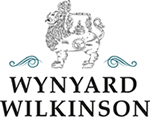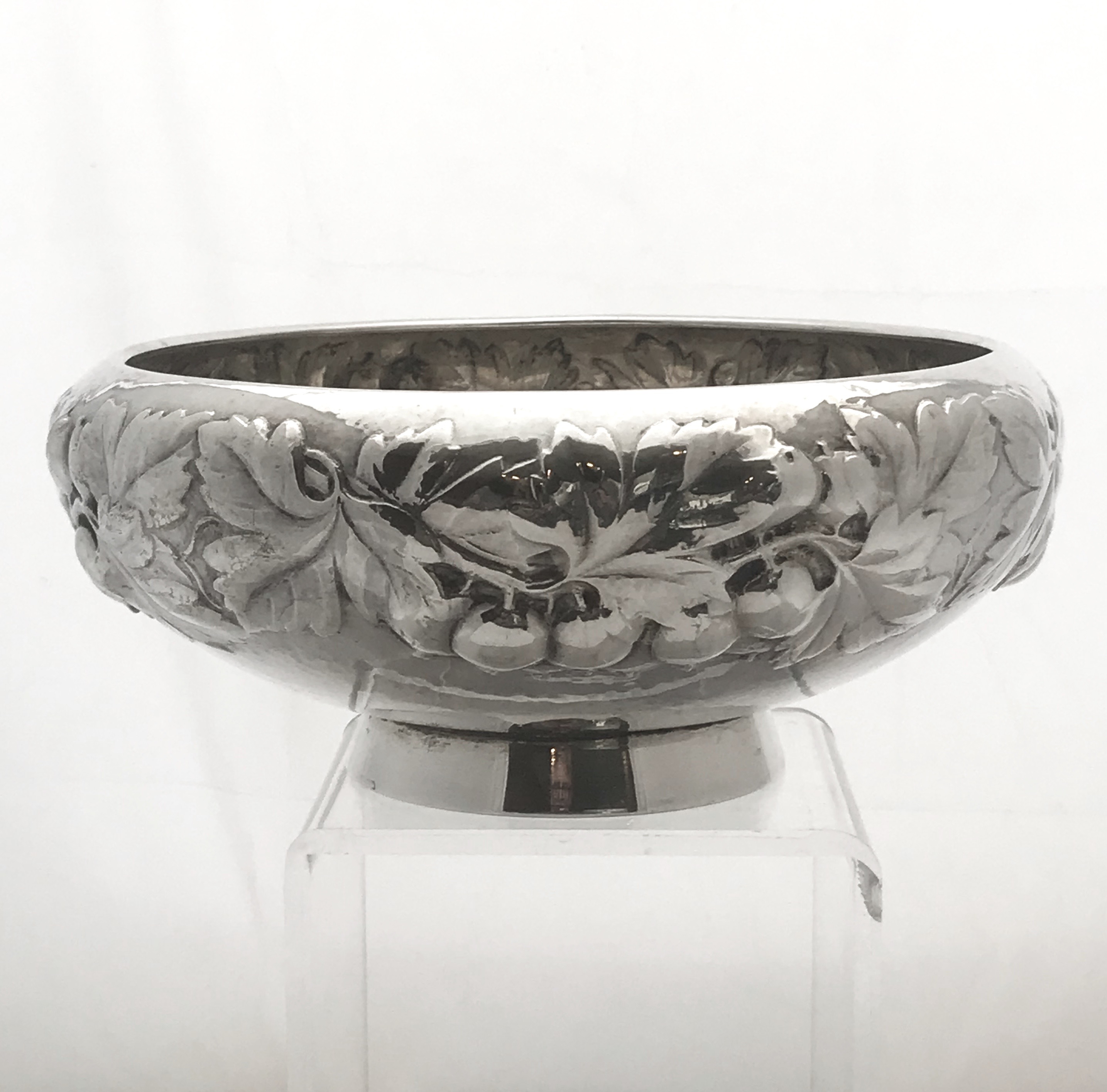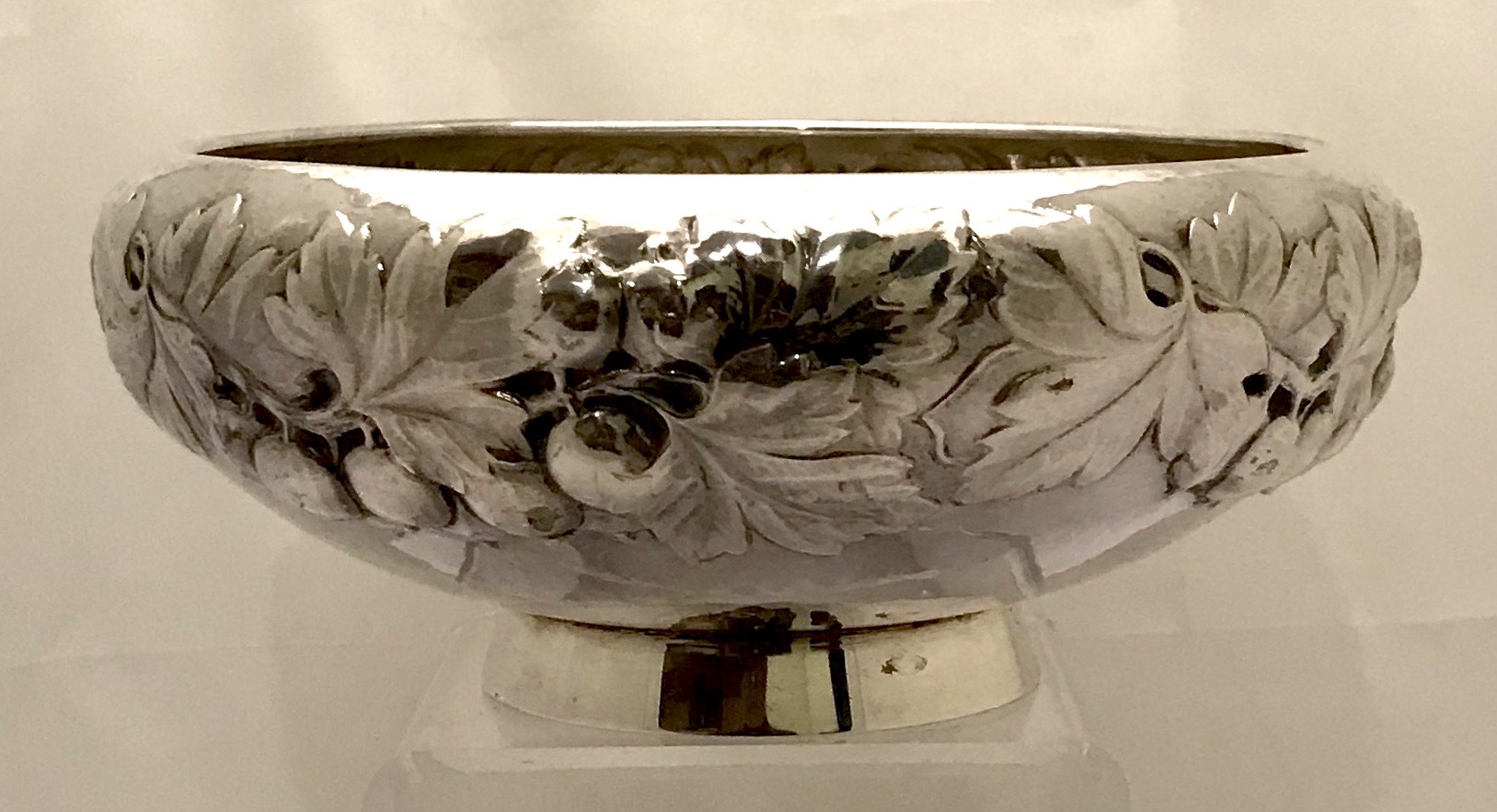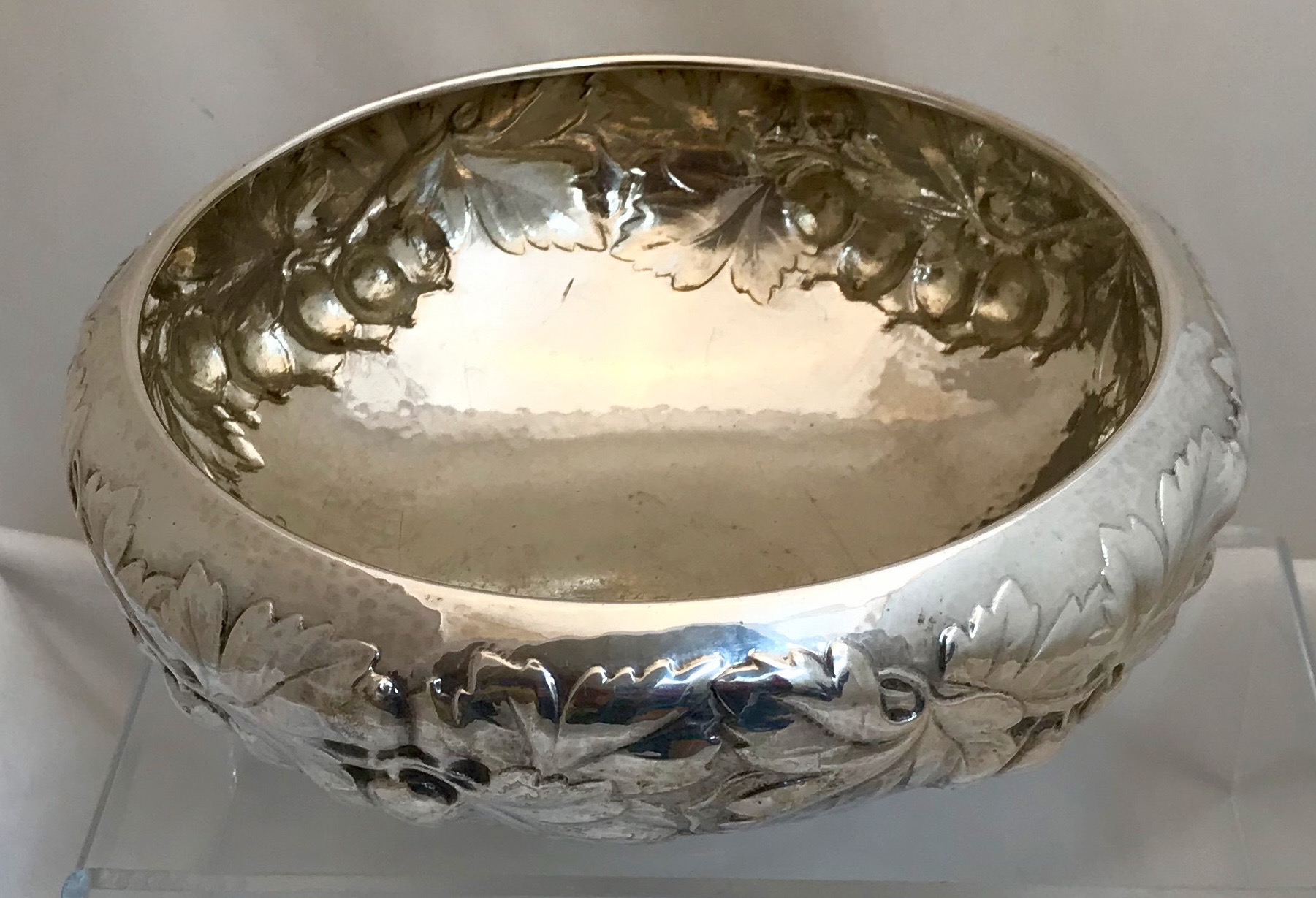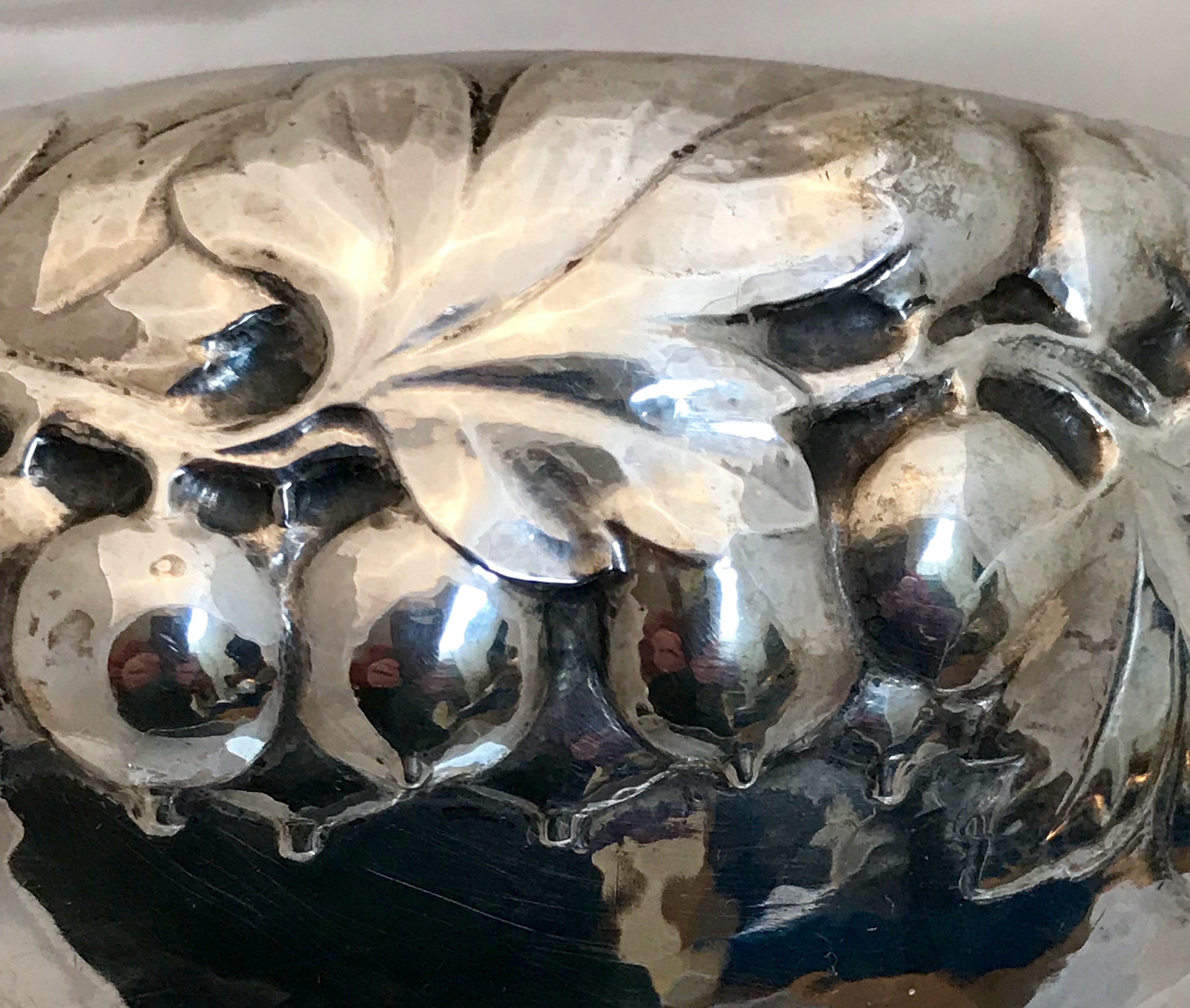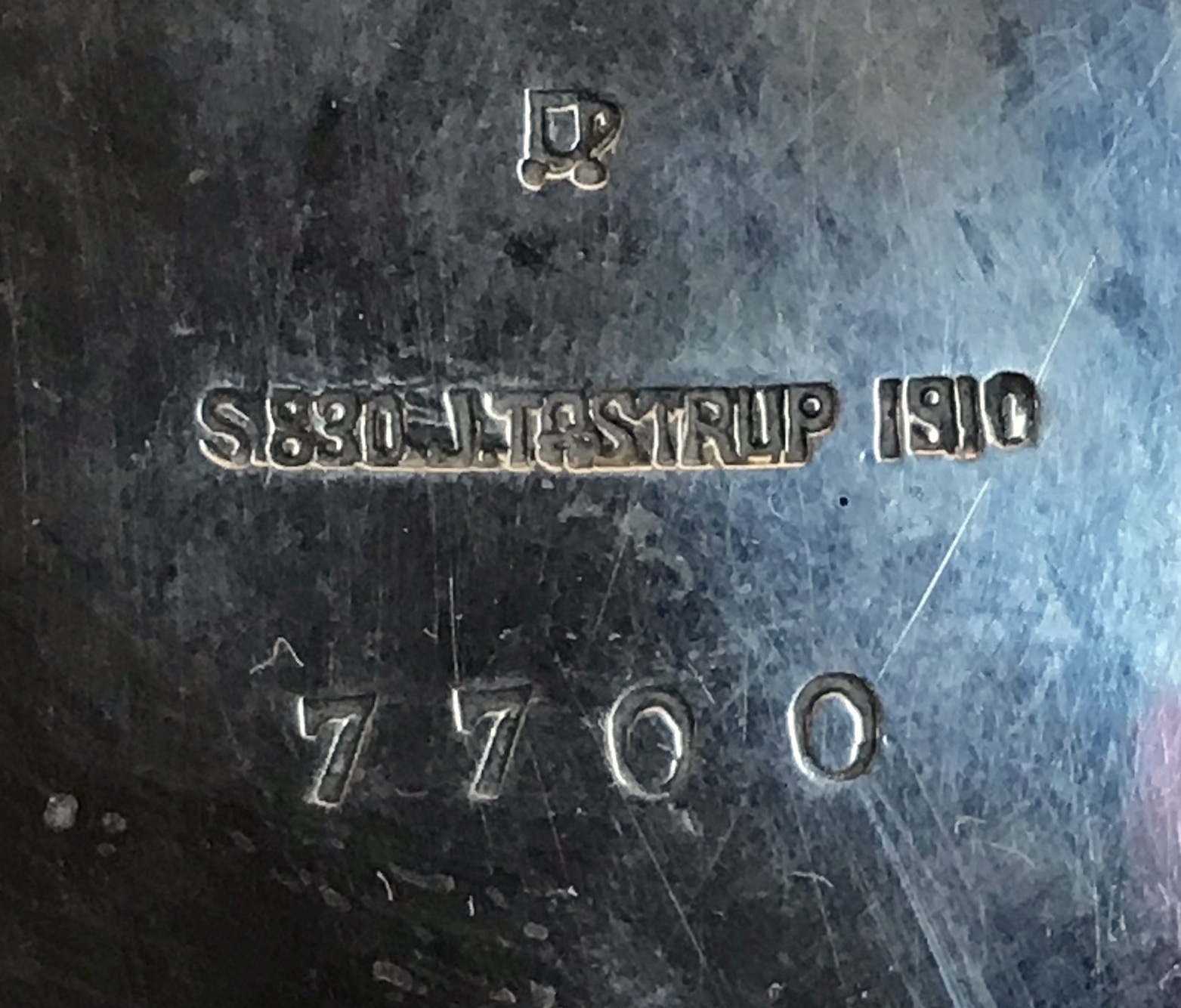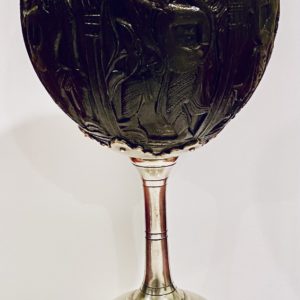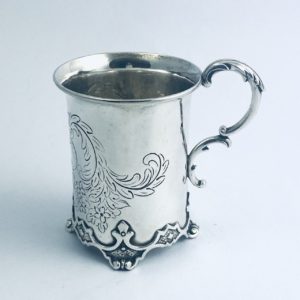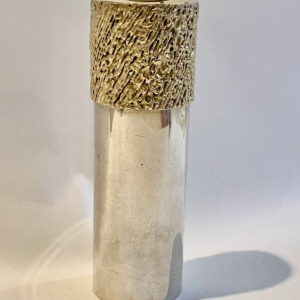Description
Of circular spot hammered form, the deep bowl has a simple, circular everted foot and carries a chased band of decoration taking the form of scrolling leaves and solbaer (blackcurrants) in high relief.
Control marks:
The marks show the standard of the silver, 0.830%, the maker, the firm of J. Tostrup, and the year, 1910. Above that is a tankard-like symbol and below is the pattern number 7700. It is rare to find a designer’s mark on Norwegian plate and jewellery; usually, as here, the mark is simply “J.TOSTRUP”.
Dimensions & Weight:
Diameter: 20 cm. / 8 in. Depth: 9 cm. / 3 ½ in. Weight: 454 gm. / 14.6 oz. T
J. Tostrup
The firm of J. Tostrup was established in Oslo in 1831 by Norwegian goldsmith Jacob Ulrich Holfeldt Tostrup (1806–90), born to an infantry captain and his wife in Hjelmeland, in Norway’s Rogaland County. Tostrup was the fourth of eight children in a family that could only afford to send the oldest child to university. He was apprenticed as a goldsmith in Bergen from 1823-28 and, during this time, received an education in all aspects of the jewellery trade under the tutelage of master goldsmith Christopher Desingthun. Tostrup spent time in St. Petersburg working on projects for the Russian imperial court, then a little more in Copenhagen. In 1828, as a journeyman, he relocated to Christiania (now Oslo) where, in 1831, he founded the jewellery firm bearing his name.
It wasn’t long before the business outgrew his small workshop and, in 1838, he opened a larger, mechanized workshop. The firm became renowned for innovative, decorative jewellery designs combining silver with other elements such as glass and enamel, most notably using “champlevé” and “plique-à-jour” techniques. Jacob held several positions in the goldsmith’s guild and artisan associations. In 1848, J. Tostrup made the original enamelled insignia for the Order of St. Olav and was later in charge of all the Order’s production. J. Tostrup received the title of Royal Court Jeweller and the founder received the Norwegian King’s Medal of Merit for gold. Later, he was appointed a Knight of the Royal Norwegian Order of St. Olav for his work as a goldsmith.
Jacob’s son, Oluf Tostrup (1842-82) entered his father’s business early in his life and was among the pioneers of the revival in ancient Norwegian enamel techniques. He was granted sole ownership of J. Tostrup in 1881 but died very shortly thereafter. Subsequently, Jacob Tostrup’s grandson-in-law, Torolf Prytz (1858–1938), one of the firm’s leading designers, was promoted to co-owner and inherited the business in 1890 on Jacob’s death. In addition to being a master filigree designer, Torolf was also a skilled architect who designed a monumental building, the Tostrupgården (Tostrup Yard) next to the Norwegian Parliament. When the building was completed in 1898, he moved the business there.
Torolf Prytz was one of Norway’s foremost designers of the Art Nouveau era. He artfully employed the Viking revival style known in Norway as the Dragon style. As the 19thcentury drew to a close, many designers were inspired by rich archaeological finds at Norway’s many Viking sites. Prytz also began incorporating traditional Nordic motifs and forms into his designs for J. Tostrup. In 1900, Torolf received a gold medal for his designs at the Paris Exposition Universelle. This style continued into the beginning of the 20thcentury especially when, in 1905, Norway and Sweden dissolved their union and the dragon became a symbol of free Norway. Torolf Prytz’ son (and great-grandson of Jacob Tostrup), Jakob Tostrup Prytz also became a notable goldsmith for the firm.
